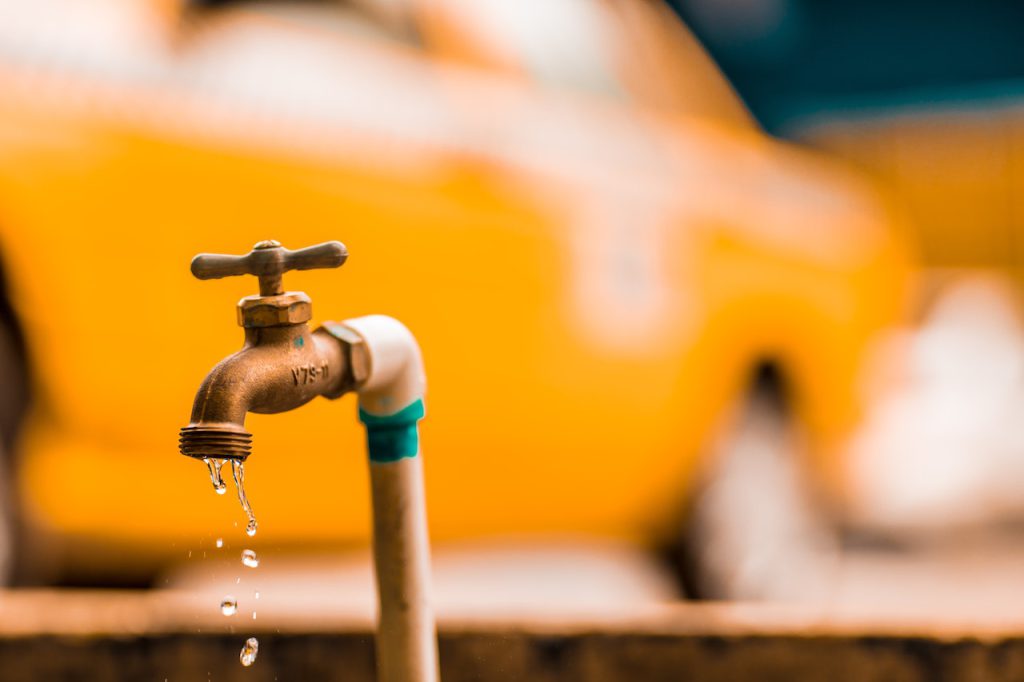Ever wondered if that weak trickle from your faucet is hinting at a bigger plumbing problem lurking within your pipes? Low water pressure might seem like a minor annoyance, but could it be the red flag signaling a more serious issue beneath the surface? When you turn on the tap and are met with a feeble stream, it’s easy to brush it off as a temporary inconvenience. But what if it’s a symptom of something more significant brewing in your plumbing system?
Table of Contents
ToggleUnderstanding Low Water Pressure
Low water pressure manifests as weak flows from faucets, slow filling of the toilet tank, and inefficient water usage in appliances.
Impact on Daily Activities
- Showering: Reduced pressure affects shower experience, leading to longer showers to rinse off soap.
- Dishwashing: Inadequate pressure prolongs dishwashing time due to difficulty rinsing off soap and food particles.
- Laundry: Washing clothes becomes challenging as it takes more cycles to clean properly.
Differentiating Temporary and Persistent Low Pressure
- Temporary: Occurs after plumbing work or municipal repairs; resolves within a short period.
- Persistent: Ongoing issue requiring professional inspection for underlying problems like leaks or clogs.
Initial Checks for Low Pressure
Check Faucets
When experiencing reduced pressure, start by checking faucets and showerheads for blockages. Mineral deposits or debris can restrict water flow, causing low psi.
Inspect Valves
Ensure proper functioning of water valves as they can impact pressure. Faulty valves may lead to pressure issues throughout the plumbing system, affecting overall water flow.
Test Across Areas
Test water pressure across different areas in the house to identify specific diagnosing pressure problems. Discrepancies in pressure levels indicate potential pressure regulator or booster issues.
Potential Solutions
- Installing a pressure booster can help achieve desirable pressure levels.
- Consider adjusting the pressure regulator to optimize water flow.
- If needed, a pump or pressure boosters can be added to increase psi.
Common Causes Explained
Sediment Buildup
Sediment buildup in pipes is a common cause of low water pressure. Over time, minerals and debris accumulate, restricting the flow of water. This issue often arises in older plumbing systems that have not been regularly maintained.
When left unchecked, sediment buildup can significantly impact water pressure throughout the house. Homeowners may notice a gradual decrease in pressure in various faucets and fixtures. To address this issue, flushing the pipes to remove the accumulated sediment is recommended.
Aging Pipes
The aging of pipes can also contribute to low water pressure. As pipes deteriorate over time, they may develop corrosion or rust, leading to obstructions that impede the smooth flow of water. Older homes with original plumbing are particularly susceptible to this issue.
When aging pipes are the culprit behind low water pressure, homeowners may experience inconsistent water flow and even discoloration in the water due to rust particles. Replacing old pipes with newer, more durable materials can help restore proper water pressure and quality.
Water Main Supply Issues
Issues with the water main supply can have a significant impact on household water pressure. Damage or leaks in the main supply line can result in reduced pressure reaching individual properties. Municipal maintenance work or repairs can temporarily disrupt normal water flow.
Homeowners facing water main supply issues may notice a sudden drop in water pressure across all faucets and appliances connected to the main supply line. In such cases, contacting the local water utility company for assistance and updates on any ongoing maintenance work is crucial.
Detecting Leaks Early
Using water meter readings is a reliable method to detect leaks in your plumbing system. Check the meter and note any unusual fluctuations.
Look for water stains or mold growth around walls, ceilings, or floors as these can indicate hidden leaks that need immediate attention.
Monitoring your water bills is crucial. Any unexplained increases could be a sign of a major leak inside your plumbing system.
Addressing Pipe Problems
Corrosion Check
Inspect water pipes regularly for signs of corrosion or damage. Corrosion can lead to plumbing leaks and reduced water pressure.
Corrosion typically occurs in older pipes made of materials like galvanized steel. It can result in leaks and eventually affect the overall water flow in your home.
Material Degradation
Address issues related to pipe material degradation promptly. Over time, pipes can deteriorate, impacting water pressure and potentially causing leaks.
Different pipe materials degrade at varying rates. For instance, copper pipes are durable but may still degrade over decades, affecting water pressure.
Installation Impact
Consider how poor pipe installation can impact water pressure. Improperly installed piping can lead to restrictions in the flow of water throughout your home.
Inadequate installation techniques such as incorrect sizing or improper connections can significantly reduce the efficiency of your home’s plumbing system.

Fixing Faulty Fixtures
Fix dripping faucets promptly to prevent pressure loss. A leaking faucet can waste gallons of water, impacting both your water bill and water pressure. It’s a simple repair that can make a significant difference.
Replace worn-out washers or seals in fixtures. Over time, these components can degrade, leading to leaks and reduced water pressure. By replacing them, you can restore proper function to the fixture.
Upgrade to high-efficiency fixtures to improve water flow. Modern fixtures are designed to optimize water usage while maintaining adequate pressure levels. This upgrade not only enhances performance but also saves water in the long run.
By addressing issues with plumbing fixtures, you can often resolve low water pressure problems without the need for major repairs. Taking care of these small fixes promptly can prevent more significant issues down the line.
Pros:
- Cost-effective solutions
- Improved water efficiency
Cons:
- May require some DIY skills
- Initial investment for upgrades
Resolving Regulator Issues
Adjusting Settings
To address pressure regulator problems, start by adjusting the settings to optimize water flow. Check the current pressure levels and make necessary tweaks.
Inspect the regulator closely for any visible signs of wear or damage. Look out for leaks, rust, or irregularities that may indicate underlying issues.
Consider replacing the pressure regulator if adjustments do not improve water pressure. Upgrading to a new regulator can provide long-term solutions.
Regular Maintenance
Perform routine checks on the regulator to ensure it functions correctly. This preventive measure can help identify potential problems early on.
Issues with the pressure regulator can impact water flow throughout your plumbing system. Addressing these promptly can prevent further complications.
Engage with your utility supplier if you suspect an external factor affecting water pressure. They can investigate and provide insights into the situation.
Clearing Pipe Clogs
Vinegar Solutions
Vinegar can be a powerful ally in clearing clogs within your plumbing system. By creating a mixture of vinegar and hot water, you can effectively break down debris causing the blockage. Pour this solution down the affected drain and let it sit for some time before flushing with cold water.
Plumbing Snakes
When facing more stubborn blockages, utilizing a plumbing snake can provide an effective solution. This tool allows you to physically remove clogs that are deeply lodged within your pipes. By inserting the snake into the drain and rotating it, you can dislodge and pull out debris causing the low water pressure.
Avoid Chemical Drain Cleaners
Chemical drain cleaners may seem like a quick fix for clogs; however, they can actually worsen the situation by damaging your pipes. These harsh chemicals can corrode the interior of your plumbing system, leading to more extensive issues in the long run. Opting for safer alternatives like vinegar solutions or plumbing snakes is recommended.
Pros of Using Vinegar Solutions:
- Environmentally friendly
- Safe for pipes
- Cost-effective
Cons of Using Chemical Drain Cleaners:
- Harmful fumes
- Potential pipe damage
- Temporary fix without addressing root cause
Incorporating these DIY methods into your regular maintenance routine can help prevent serious plumbing issues associated with low water pressure. Remember, addressing clogs promptly is crucial to maintaining a healthy plumbing system.
When to Seek Professional Help
Contact a Plumber
If DIY solutions fail to improve low water pressure, it may indicate a more significant plumbing issue. Contact a licensed plumber for thorough inspection and repair of complex pipe or fixture problems. Plumbers have the expertise to identify underlying issues causing low water pressure accurately.
Plumbers use specialized tools and equipment to diagnose and fix plumbing problems effectively. They can pinpoint the exact location of leaks or blockages, ensuring a precise solution. By hiring a professional, you can avoid potential damage from unresolved plumbing issues.
Professional Leak Detection Services
When facing persistent low water pressure despite your efforts, consider professional leak detection services. These services utilize advanced technology to detect hidden leaks within your plumbing system accurately. Hidden leaks can lead to water wastage and structural damage if left unattended.
Professional leak detection services employ methods such as video inspection and acoustic listening devices to locate leaks without causing unnecessary disruption to your property. By addressing hidden leaks promptly, you can prevent further damage and conserve water resources.
Signs of Complex Plumbing Problems
Low water pressure can sometimes be an indication of more severe plumbing issues within your home. If you notice a sudden drop in water pressure accompanied by unusual noises or discoloration in the water, it’s crucial to seek professional assistance promptly. Ignoring these signs can lead to extensive damage and costly repairs in the long run.
Pros and Cons
- Pros: Professional plumbers offer expertise in diagnosing and resolving complex plumbing issues.
- Cons: Hiring professional services may incur additional costs compared to DIY solutions.
Conclusion
Now that you understand the ins and outs of low water pressure, you can confidently tackle any issues that may arise in your plumbing system. Remember, early detection is key to preventing costly repairs down the line. By staying vigilant and addressing problems promptly, you can maintain a steady water flow throughout your home. Whether it’s fixing leaks, clearing clogs, or seeking professional help when needed, taking action swiftly will ensure your plumbing operates smoothly.
Don’t wait until a minor inconvenience turns into a major headache. Regular maintenance and timely interventions can save you time, money, and stress in the long run. Keep an eye out for any changes in water pressure and address them promptly to keep your plumbing system in top shape. Your proactive approach will pay off with a reliable and efficient water supply for years to come.
Experience Excellence in Low Water Pressure Solutions with Garcia Plumbing and Home Restoration!
We recognize the frustrations homeowners face when grappling with low water pressure in their plumbing systems. At Garcia Plumbing and Home Restoration, our proactive team of licensed experts leads the way in delivering exceptional low water pressure solutions that guarantee reliability and efficiency.
We don’t just react to plumbing issues; we prevent them. Garcia Plumbing and Home Restoration offers comprehensive home maintenance solutions to keep your systems running smoothly. Our reputation in Contra Costa County is built on unwavering quality, unmatched expertise, and the trust of numerous satisfied clients. Don’t settle for less when it comes to your home’s functionality and cleanliness. Contact us today for proactive low water pressure services and enjoy a worry-free plumbing future!




